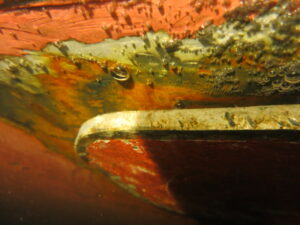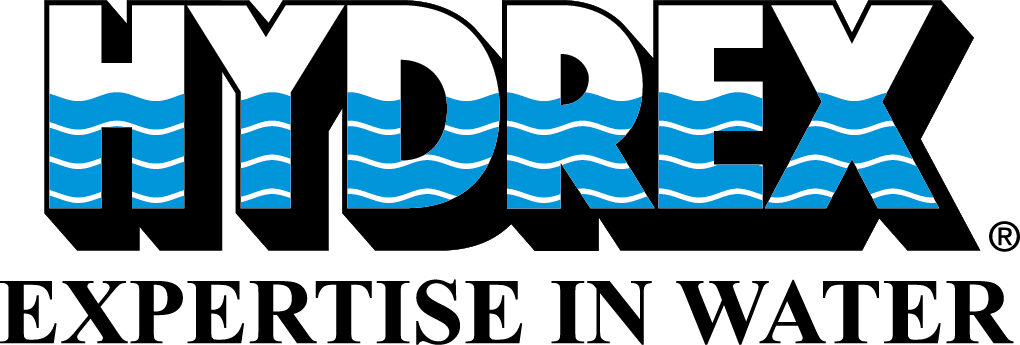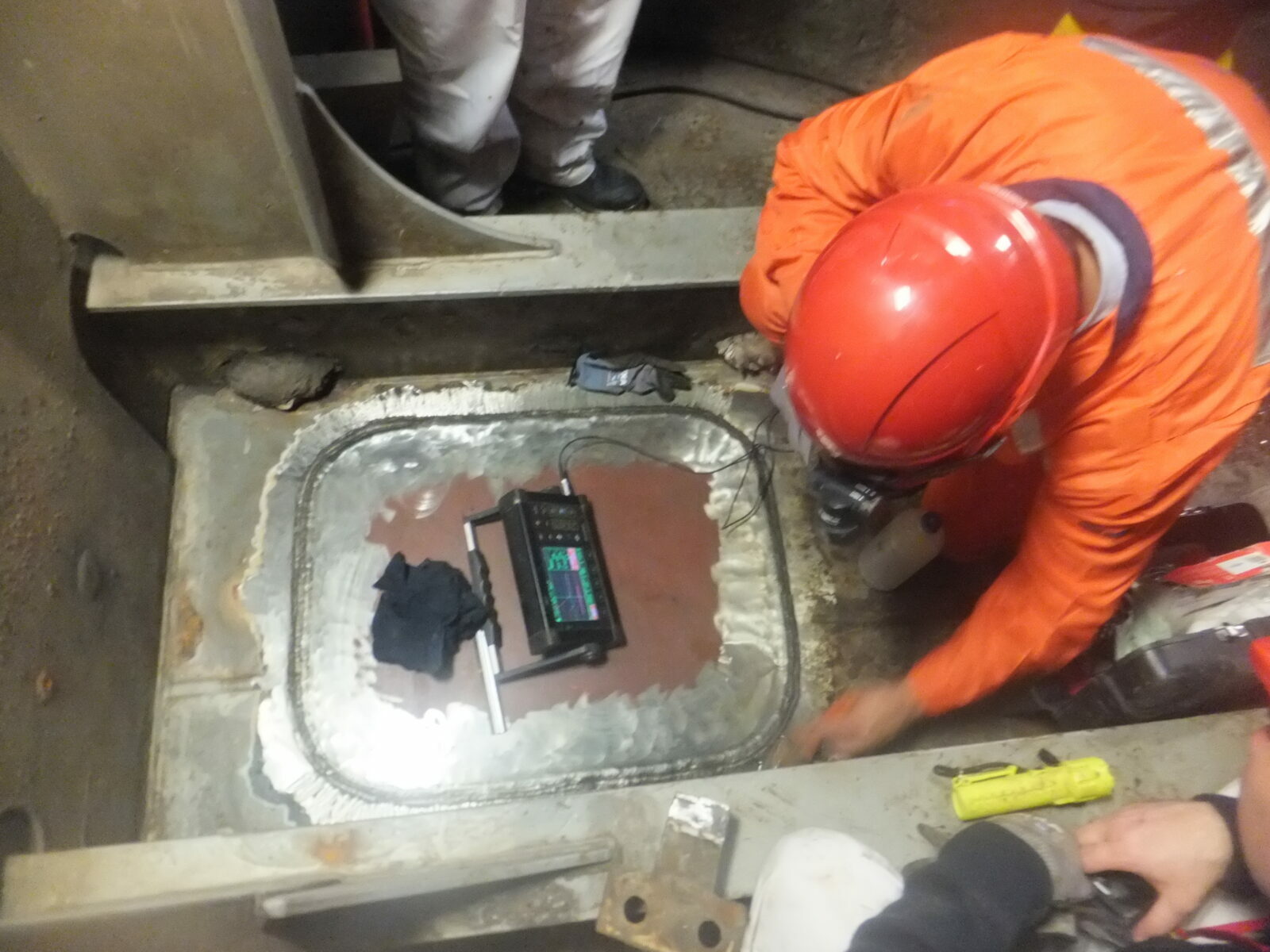A 277-meter oil tanker suffered a hole in the shell plating of her ballast tank. We were contacted by the owner to provide an underwater solution that would allow the vessel to keep her schedule. A team of our diver/technicians therefore mobilized to Punta Del Este, Uruguay to perform on-site repairs.
The corrosion damage was situated in the bottom plating of the ballast tank, underneath the sounding pipe. The tanker’s tight schedule only allowed for a temporary repair at this time. Because of the bad weather conditions and resulting fast current, no underwater welding work could be performed. Our technical department proposed a repair plan that incorporated both the limited time frame and the meteorological circumstances.
Fast temporary repair prevents drydocking
After our team arrived in Punta Del Este, where the vessel was at anchorage, they performed a detailed inspection of the damage. Next a doubler plate was installed. This was done using a method that did not require any welding work on the waterside of the shell plating.
This repair was carried out very fast. It allowed the tanker to keep his schedule. The classification society agreed to let the vessel sail until her next scheduled drydocking, if regular inspections were done to the affected area.
While this repair helped to evade going off hire, the charterer requested the owner to find a permanent solution to avoid the required inspections. Once again we were asked to look for a way to help the owner.

Permanent underwater solution
Thanks to the quick doubler operation carried out by our divers, the vessel could keep on sailing until a larger time frame became available. This was needed to plan the permanent repair that would involve the installation of a new insert plate.
Three months after the doubler plate had been installed, a Hydrex team mobilized to Punta Del Este again. They arrived on-site with a workboat, all the needed equipment and the new insert plate that measured 860 mm x 600 mm.
The repair operation started with the removal of the doubler plate and the installation of a cofferdam on the waterside of the damaged area. This cofferdam had been modified to fit the shape of the hull by using the measurements taken by our team during the first part of the operation.
The team then cut away the affected area of the bottom plating. Next they fitted the insert plate, which was welded following the Hydrex class-approved procedure for insert plates, using a full penetration weld.
An independent inspector carried out ultrasonic testing and the repair was approved by the classification surveyor who was present during the operation. The divers then removed the cofferdam, concluding the repair.
Conclusion
During both parts of the operation the weather conditions were terrible, but we were able to find a way around this. By performing a very fast temporary repair that did not require any underwater welding work, we bought the owner of the tanker the time needed to find a more suitable date for the second, permanent part of the repair.
Diving conditions were still not ideal during the second phase of the operation, but this did not prevent our team from securing the cofferdam and installing the new insert. Our divers have gone through extensive training, both in-house and external to make sure they can perform the task at hand in challenging circumstances. They do this without compromising the high safety and quality standards we are known for.

